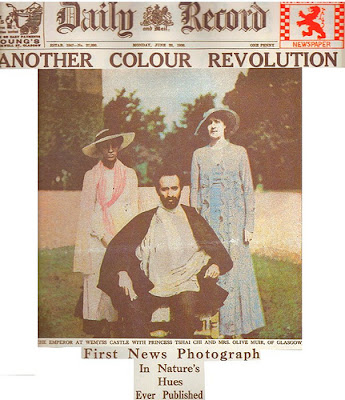In this lecture we discussed a short selected history of picture stories, what makes a great picture, moving pictures, and how moving pictures tell stories.
A picture has no meaning at all if it can't tell a story.- Eetu Silanpaa
Early Indigenous Australian cave drawings are an old example of picture stories; some drawings of which are estimated to be up to 40,000 - 50,000 years old, so it is clear that the process of telling stories through pictures has been around for an incredibly long time.
Another classic example of picture storytelling is Plato's 'Allegory of the Cave', which symbolically describes his idea of the predicament in which mankind finds itself, and proposes a way of salvation.
Ancient Holy Books and Stained Glass Images were early methods that relied heavily on pictures to tell the story, as many people in those times were illiterate.
Churches commonly use Stained Glass Images as a method of
story telling.
story telling.
(Left)
The Book of Kells - Ireland 800 - One of the earliest known examples of a Holy Book
With the invention of early newspapers, line drawings were generally used to accompany stories before cameras were around. The first published actual photo in a newspaper, was a black and white image of the 'Steinway Hall', in the New York Daily Graphic on 2nd December 1873.
The Daily Graphic - December 2, 1873 issue.
The first colour image published in the newspaper was in the Scottish Daily Record in 1936.
Another development in photojournalism was the eventual advancement into digital capture and upload methods; journos can nowadays capture images and upload them all at once, instead of having to manually develop negatives and process from there. Then, slowly but surely, digital manipulation of images started to become commonplace, ranging from simple editing of the hues of an image, to completely changing the elements of an image itself. Digital manipulation is not always a good thing, especially in fashion magazines; digitally manipulating here, can result in a distorted world vision of what 'beauty' is. Watch the video below to understand how..
So, What makes a great picture?
Below are a few elements that must be executed creatively in order to produce a great picture -
- Framing - Use the Rule of Thirds, choose carefully what you include in the frame and what you don't.
- Focus - What is in focus in the picture, and what is in the
background, as well as what anyone in the picture may be focusing on.
- Angle & Point of View - For example, a low angle picture may make the subject appear powerful.
- Exposure (or Light) - must be aligned with the context of a photo - for example, certain types of lighting have certain symbolic meanings.
- Timing - A great picture is one that really 'captures the moment' - not just before, or just after (unless purposely intended).
A few historical images that are considered to be timeless, incredible pictures -
In 1979, the only
anonymous photograph to win a Pulitzer Prize was taken. It
captured nine Kurdish rebels and two of the Shah’s policemen being
executed by firing squad in revolutionary Iran. In 2006, the photographer's
identity was revealed to be Jahangir Razmi.
captured nine Kurdish rebels and two of the Shah’s policemen being
executed by firing squad in revolutionary Iran. In 2006, the photographer's
identity was revealed to be Jahangir Razmi.
John Filo's Pulitzer Prize winning photo of a victim of the shootings at Kent State University in 1970.
Award winning photographer James Nachtwey's photo of Tuberculosis and AIDS victims.
Moving pictures have a very similar way of telling stories as photographs do. Some things to consider when creating moving pictures are -
- Framing (or Mise En Scene) - Still use the Rule of Thirds, and choose carefully what you include in the frame and what you don't, along with considering exactly when it should appear.
- Focus - What is in focus in the frame, and what is in the
background, as well as what those in the moving image are focusing on.
- Angle & Point of View - For example, a high angle shot may make the subject appear weak or insignificant.
- Exposure (or Light) - must be aligned with the context of the story being told - certain types of lighting have certain symbolic meanings.
- Timing (or Editing) - It is crucial to capture each moment effectively, and edit in a way that aligns with what you want the audience to perceive of the story.
- Inclusion of Sound Dimension - moving pictures can also utilise sound to enhance the story being told.
Moving pictures are now commonly utilised across all media, whether it be entertainment, or news. They are become increasingly easy to create as technology continues to rapidly develop. For example, cell phone technologies that allow people to film, edit and upload all on the single device. The first time cellphone generated footage was used in news broadcasts was when the July 7th 2005 London Bombings, and cellphone cameras were a relatively new, but readily available technology.
There are many ways to tell a story without words - some of which are the use of still images, or moving pictures. This lecture on 'Picture Stories' was very enlightening, and proved exactly how a picture really can tell 1000 words.
There are many ways to tell a story without words - some of which are the use of still images, or moving pictures. This lecture on 'Picture Stories' was very enlightening, and proved exactly how a picture really can tell 1000 words.









No comments:
Post a Comment